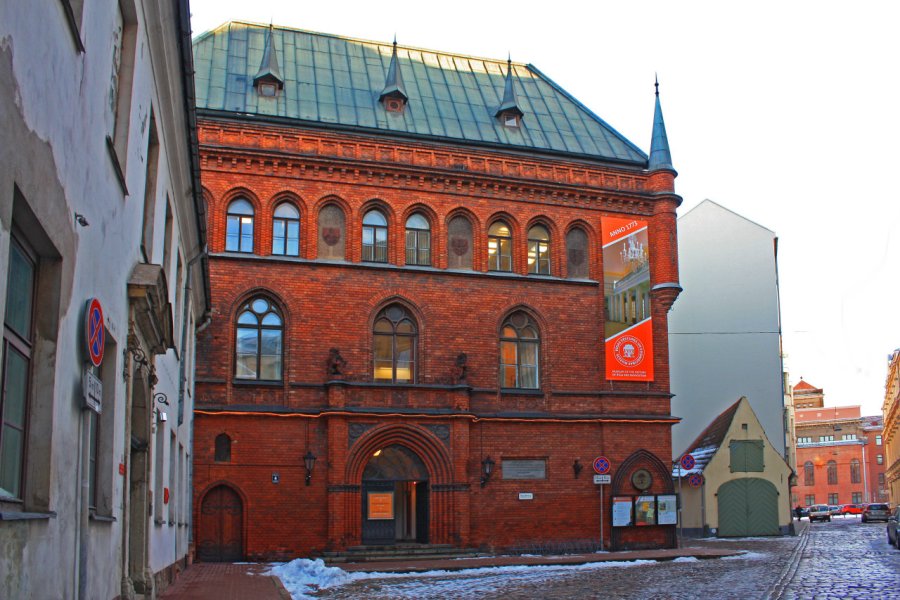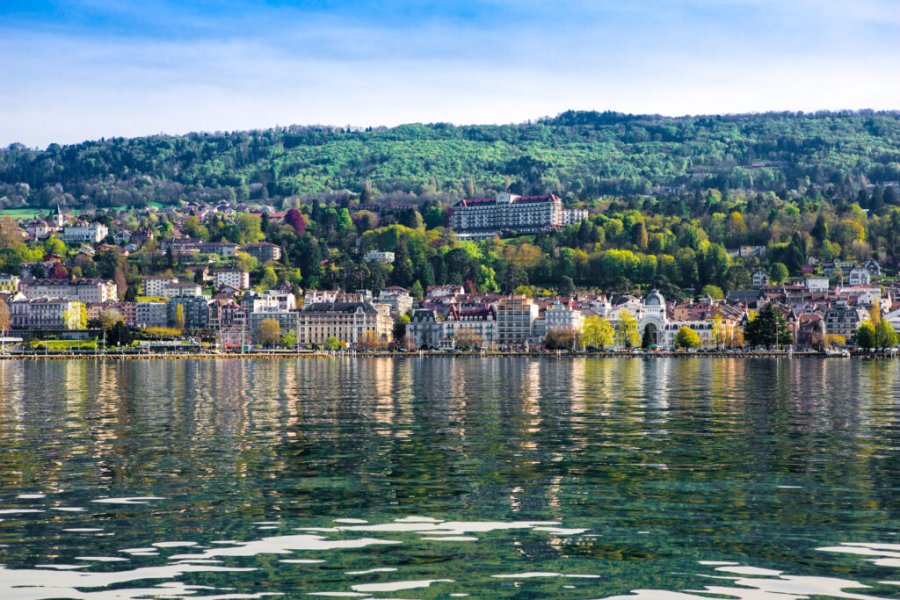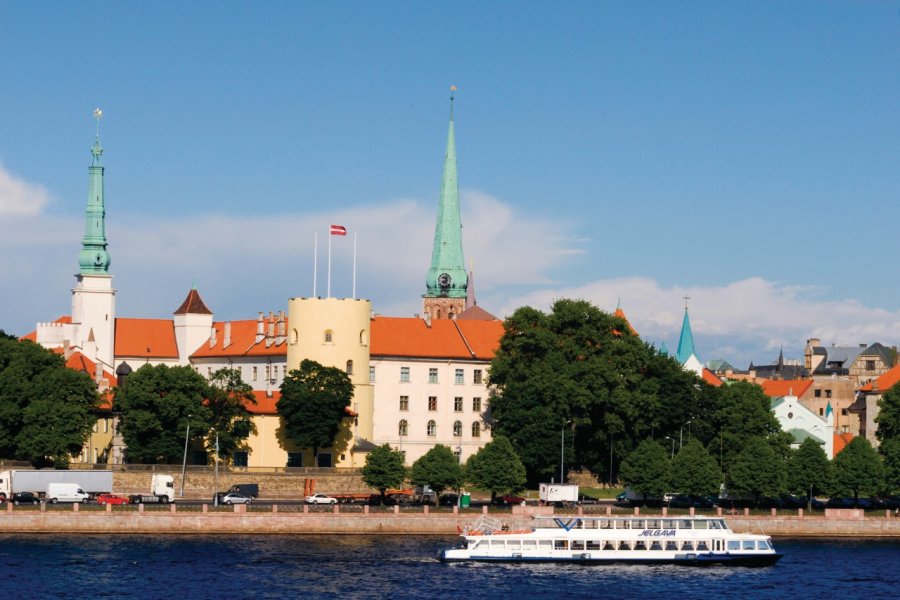Travel Guide Rīga
Nestled in the heart of the Baltic Sea, Rīga, the Latvian capital , is a pretty, little-known city that fascinates as much by its history as by its modernity. Enchanting, it is the perfect blend of Art Nouveau architecture, medieval alleyways and contemporary dynamism. So, dear globetrotters, prepare to be seduced by this Baltic city! The Rīga Tourist Guide reveals the must-sees, the city's finest hotels and the best restaurants!
Rīga is nicknamed the Paris of the North, and it's not hard to see why as soon as you stroll through its picturesque streets. The city impresses visitors with its cobbled streets and slender towers. With its majestic buildings and ornate facades, it's a veritable open-air museum. TheArt Nouveau district, in particular, is an invitation to look up and admire the sculptural details of floral motifs, faces and mythological creatures, as well as the colorful frescoes adorning the buildings, which are a real feast for the eyes. Alberta Street is particularly renowned for its architectural masterpieces. Not far away, the Freedom Monument stands proudly, symbolizing Latvia's freedom and independence.
One of the first stops not to be missed by any traveler is the Old Quarter, a Unesco World Heritage Site. Here, the House of the Black Heads, a former merchant guild, stands alongside the Powder Tower and the elegant Dome of Rīga, whose majestic organ attracts music lovers from all over the world.
An adventure in Rīga would not be complete without an immersion in its culture. Visit theMuseum of the Occupation of Latvia, which traces the dark periods of Soviet and Nazi occupation. For a lighter note, the Central Market is a bustling place where local flavors abound. The pavilions, once zeppelin hangars, now offer Latvian specialties. What's on the menu? Fresh berries, smoked fish and traditional cakes, pickled herring, rye cakes and heart-warming traditional drinks.
The city also boasts a number of green spaces, such as Parc Bastejkalna, with its small bridges and winding canal, a haven of peace in the heart of the city. It runs alongside the Daugava River. It's the ideal place for a bucolic break after a day of exploring. And if you feel like it, the Latvian National Art Museum opens its doors to you for an artistic journey through the centuries. And don't forget to make a detour to the LatvianNational Opera , whose rich program promises some great cultural evenings. And for a superb panoramic view, climb to the top ofSt. Peter's Church Tower, from where Rīga is revealed in all its splendor!
What to visit Rīga?
Suggested addresses Rīga
When to go to Rīga?
Rīga is always buzzing with lively festivals and cultural traditions. But when is the best time to visit?
Winter (December to February): Rīga in December is a winter's dream, with its famous Christmas Market on Dome Square. If ice-skating or ballet at the Latvian National Theatre appeals to you, January and February are the season for you.
Spring (March to May): March celebrates the Staro Rīga Festival, when lights transform the city into a fairy-tale spectacle. April sees the start of the classical concert season at the Latvian National Opera. This is the best time to visit Rīga.
Summer (June to August): June hosts the Unesco Song and Dance Festival. In July, the city vibrates to the rhythm of the Rīga City Festival. If you're an art lover, the Rīga Biennial in August is a must.
Autumn (September to November): September blossoms with the Rīga Film Festival. Sports fans can take part in or attend the Rīga Marathon in October, while November is ideal for exploring museums and galleries, with fewer tourists on the horizon.
When to visit Riga Every month offers a new reason to fall under the spell of this Baltic city.
Weather at the moment
Rīga has a temperate oceanic climate. During the high season, from June to August, expect mild, sunny days with average temperatures around 20°C. This is the ideal time to explore the old town and stroll along the Daugava River.
The low season runs from December to February. Rīga is dressed in a blanket of white, with temperatures often dipping below 0°C. The snow gives the city a magical, albeit chilly, atmosphere!
Between these two periods, temperatures in Rīga are relatively moderate. Spring offers a gentle transition, with months like April and May seeing the city's parks come to life. Autumn, in September and October, is pleasantly cool, with colorful foliage in abundance. The weather in Rīga unfolds an ever-changing landscape suitable for all kinds of adventures.
Travel to Rīga is quite affordable for most globetrotters. The official currency is the Latvian lat, which is stable and widely available at exchange offices. Most establishments accept credit cards, but having a few lats in your pocket is handy for small shops.
In the budget category, expect delicious meals at rock-bottom prices and basic but comfortable accommodation. For added comfort, Rīga offers charming downtown hotels with excellent value for money. If you're aiming for luxury, the city doesn't disappoint either, with its top-of-the-range establishments offering exceptional services.
Tipping in Rīga is appreciated, especially in restaurants where it's common to leave between 5% and 10% of the bill. In short, whatever your pocketbook, Rīga offers a rich experience at a reasonable cost.
Planning a trip to Rīga? Make sure you know what formalities are required for a smooth stay. The good news is that for European Union citizens, no visa is required for Rīga for short stays. All you need is a valid passport or identity card.
If you are arriving from a non-EU country, check the specific requirements linked to their nationality. In some cases, a visa may be required. Once in Rīga, it is advisable to carry identification with you at all times.
For detailed, up-to-date information on formalities, please consult the website of the nearestLatvian embassy or consulate before you leave. They provide precise details of the documents required, any visa fees, and other useful information to help you prepare for your trip.
Dreaming of Rīga also means preparing for a serene stay in terms of health. No specific vaccinations are required for travelers from Europe. However, it is always advisable to check that your routine vaccinations, such as tetanus and diphtheria, are up to date. A common concern when traveling abroad is water quality. In Rīga, tap water is generally safe to drink.
Another reassuring point is that Rīga has a modern medical infrastructure and well-stocked pharmacies. However, it is advisable to take out travel insurance to cover any medical or hospitalization expenses. In terms of health, Rīga offers every guarantee for a carefree stay.
Practical information
- When to travel?
- Weather forecast
- Budget
- Formalities
- Health
- How to travel by yourself?
- How to get organized?
- Getting around
Media
How to go to Rīga? Our advice & tips
Discover Rīga with complete peace of mind: the charm of organized travel. Here's how to get the most authentic experience:
You could opt for a traditional itinerary, exploring the picturesque old town, or enjoy a themed experience, such as a culinary tasting of local delicacies, or a stroll through the city's remarkable Art Nouveau buildings.
Whether you've got a weekend or a whole week, Rīga has something for everyone. Imagine a long weekend punctuated by an evening at the Latvian National Opera, or a week exploring the city's secret districts.
If you like the idea of bonding with other explorers, a group is ideal. And for added intimacy, private excursions are available, such as a night tour of illuminated Rīga, just for you.
Offers can be all-inclusive or à la carte. Make sure you know whether that cruise on the Daugava or that visit to the Central Market are included.
Some organizers adapt the trip to suit your needs: would you like to take a Latvian cooking class or learn to folk dance? It's all possible.
An organized trip to Rīga is your passport to authentic discovery. Pack your bags and let yourself be transported by Latvian magic.
Discover our selection of travel agencies for this destinationTo travel alone in Rīga is to savor freedom in the heart of Latvia:
Start with the cobbled streets of Vecrīga, the old town, rich in history.
Learn basic Latvian: a paldies or labdien lights up the faces. Enjoy a rupjmaizes kārtojums in a café and sample local delicacies at the market.
Travel like a Rīdzinieks by streetcar or boat.
For an authentic stay, stay with a local and attend festivals, such as Dziesmu svētki. Finish off with a traditional sauna or a stroll through Mežaparks.
Gettingaround Rīga is easy with its well-organized public transport network and charming cobblestone streets. Here's how to get the most out of your travels in Latvia's capital:
1. Streetcars: Rīga's streetcar network is both historic and functional, with seven distinct lines. Keep an eye out for streetcar no. 11, which offers a picturesque route through the city.
2. Buses and trolleybuses serve the whole city and the surrounding area. For a trip along the Daugava, opt for bus no. 3, which offers magnificent views of the river.
3. Rīgas Satiksme: the electronic e-talon card is the most convenient way to pay for your journeys. It's valid for streetcars, buses and trolleybuses. You can buy and recharge this card at numerous kiosks and stores throughout the city.
4. By bike: Rīga has dedicated lanes and bike rental outlets like Rīgas Velo.
5. On foot: Vecrīga, the old town, is essentially pedestrianized. With historic squares like Doma laukums and picturesque alleyways, it's a joy to explore on foot.
6. Cabs and ride-sharing apps: check that the cab is official. Car-sharing apps like Bolt or Yandex are also popular and convenient.
7. River cruising : for a different perspective on Rīga, take the river shuttles on the Daugava.
8. Rent a car to explore the Vidzeme region.





























